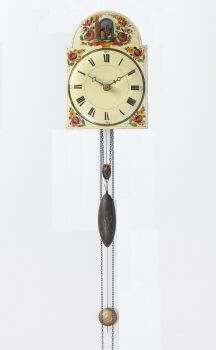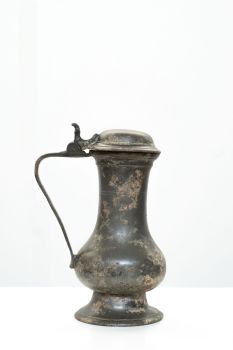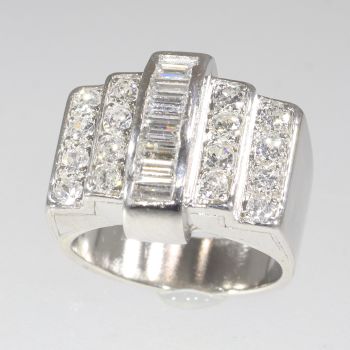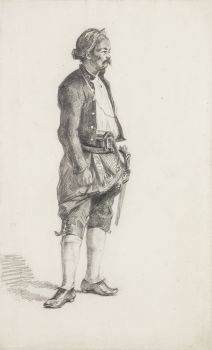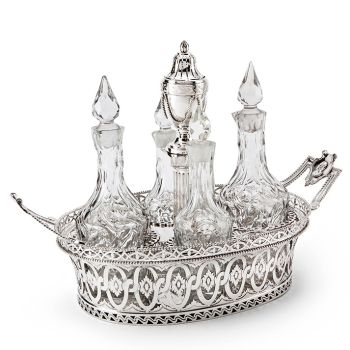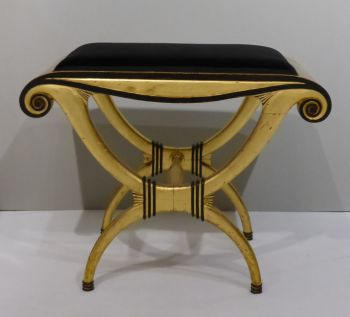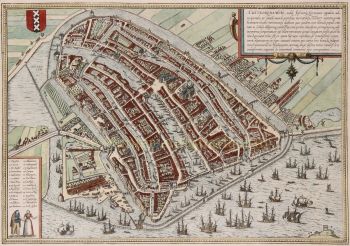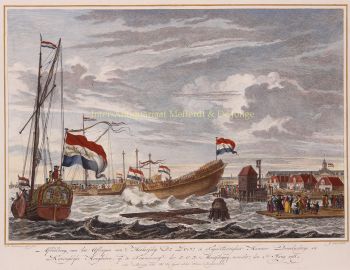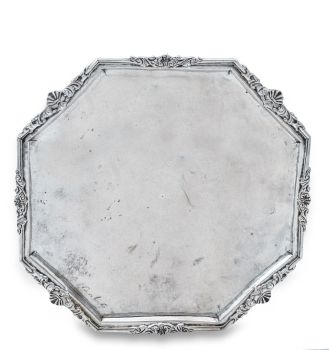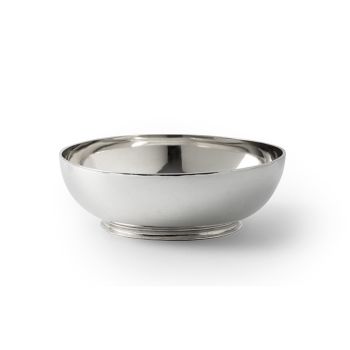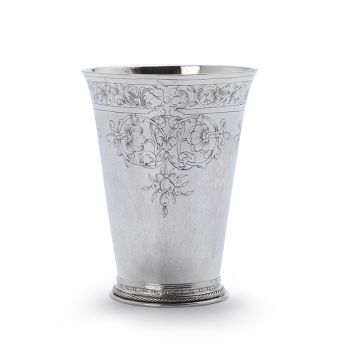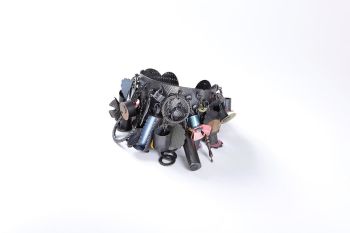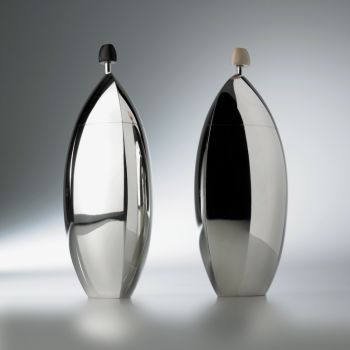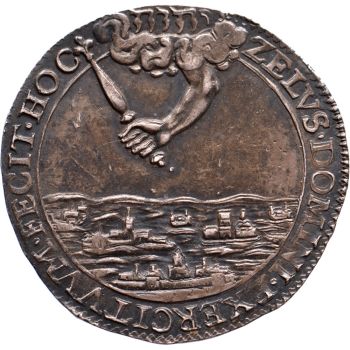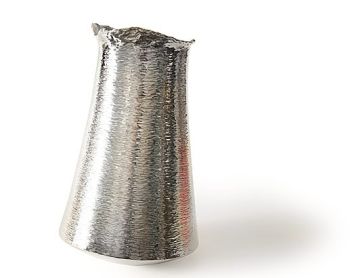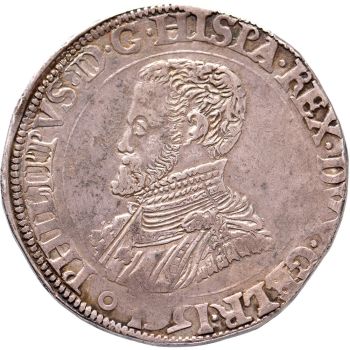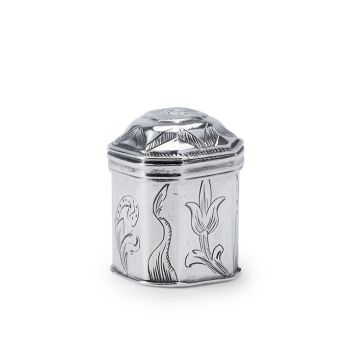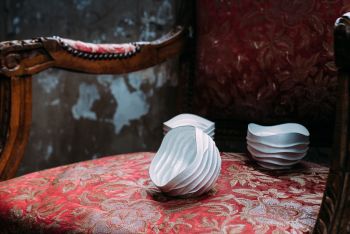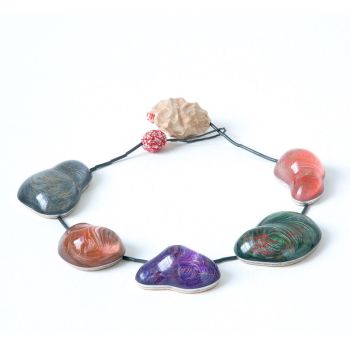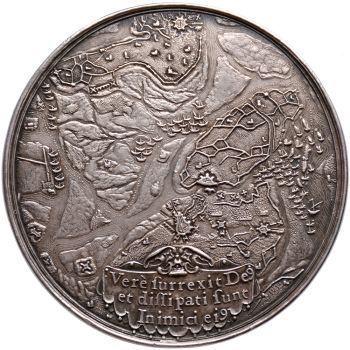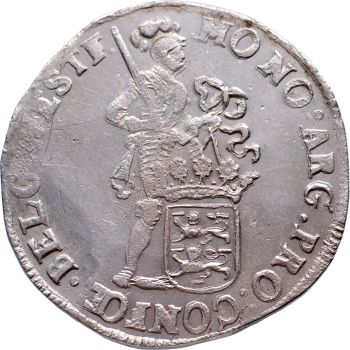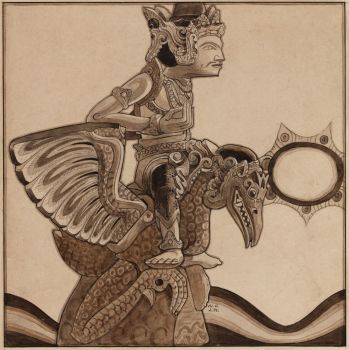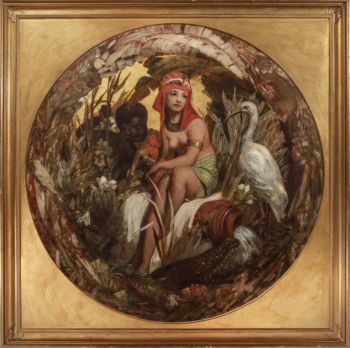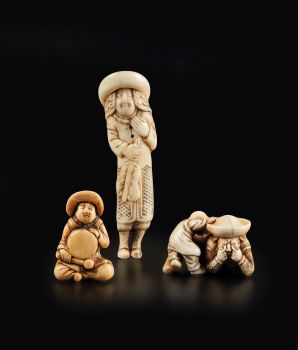A fine Indonesian silver Rococo engraved sirih box 1770
Artista Desconhecido
Prata
7 ⨯ 18 ⨯ 13 cm
Preço em pedido
Zebregs & Röell - Fine Art - Antiques
- Sobre arteBatavia (Jakarta), circa 1770, with maker’s mark HR, Hendrik Rennebaum (?- 1793, act. 1769-1780) and a tree, probably the crest of Hendrik Rennebaum
H. 7 x W. 18.4 x D. 13 cm
Weight: 1115 grams
With a silvered metal betel nut cutter in the shape of a parrot, 19th century, measuring 17.5 cm in length.
Thanks to the inventory of his possessions made in 1780, we know that Hendrik Rennebaum had a thriving business. The reason for the inventory was that Rennebaum had become mentally incompetent to manage his own affairs. The contents of his shop included over 450 objects made of gold and silver, ranging from jewellery, silver tableware, commemorative salvers, tobacco boxes and betel boxes. Unfortunately, of the 20 commemorative salvers mentioned, only one so far is known to survive, and of the 20 cuspidors and 23 silver candlesticks, not one has yet been traced. The same is true of other domestic objects, such as mustard pots, fish dishes, finger bowls, salt cellars and tobacco braziers. Of the large quantity of silver tableware, only a single porridge spoon survives. The small items include pin trays, purse frames and silver toys, as well as knob, handles for walking sticks, buttons, and shoe and knee buckles.
The inventory also includes all of Rennebaum’s tools, and, as was customary at that time, also his enslaved people. Three of them were silversmiths: ‘January van Bengalen', who had a wife and two children, ‘October van Boegis’ who was a ‘boss silversmith’ and ‘Julij van Soembawa’.
From 1775 to 1780 Rennebaum held the post of assay master, and
was very active in public life, being the standard-bearer for the Westzijdse Burgercompagnie from 1769 to 1771, and dean and elder of the Lutheran Church in Batavia. - Sobre artista
Pode acontecer que um artista ou criador seja desconhecido.
Algumas obras não devem ser determinadas por quem são feitas ou são feitas por (um grupo de) artesãos. Exemplos são estátuas dos tempos antigos, móveis, espelhos ou assinaturas que não são claras ou legíveis, mas também algumas obras não são assinadas.
Além disso, você pode encontrar a seguinte descrição:
•"Atribuído a …." Na opinião deles, provavelmente uma obra do artista, pelo menos em parte
• “Estúdio de…” ou “Oficina de” Em sua opinião um trabalho executado no estúdio ou oficina do artista, possivelmente sob sua supervisão
• "Círculo de ..." Na opinião deles, uma obra da época do artista mostrando sua influência, intimamente associada ao artista, mas não necessariamente seu aluno
•“Estilo de…” ou “Seguidor de…” Na opinião deles, um trabalho executado no estilo do artista, mas não necessariamente por um aluno; pode ser contemporâneo ou quase contemporâneo
• "Maneira de ..." Na opinião deles, uma obra no estilo do artista, mas de data posterior
•"Depois …." Na opinião deles uma cópia (de qualquer data) de uma obra do artista
• “Assinado…”, “Datado…” ou “Inscrito” Na opinião deles, a obra foi assinada/datada/inscrita pelo artista. A adição de um ponto de interrogação indica um elemento de dúvida
• "Com assinatura ….”, “Com data ….”, “Com inscrição ….” ou “Tem assinatura/data/inscrição” na opinião deles a assinatura/data/inscrição foi adicionada por outra pessoa que não o artista
Você está interessado em comprar esta obra de arte?
Artwork details
Related artworks
- 1 - 4 / 12
Artista Desconhecido
A Surinam-themed Amsterdam long-case clock1746 - 1756
Preço em pedidoZebregs & Röell - Fine Art - Antiques
 Com curadoria de
Com curadoria deGallerease Magazine
1 - 4 / 24Artista Desconhecido
Japanese transition-style lacquer coffer 1640 - 1650
Preço em pedidoZebregs & Röell - Fine Art - Antiques
1 - 4 / 24Artista Desconhecido
Holandeses em miniatura (Netsuke)1700 - 1900
Preço em pedidoZebregs & Röell - Fine Art - Antiques
1 - 4 / 24- 1 - 4 / 24
Artista Desconhecido
A large wall map of Asia by Nicolas de Fer 1647 - 1720
Preço em pedidoZebregs & Röell - Fine Art - Antiques
Artista Desconhecido
Holandeses em miniatura18th century
Preço em pedidoZebregs & Röell - Fine Art - Antiques
1 - 4 / 12



